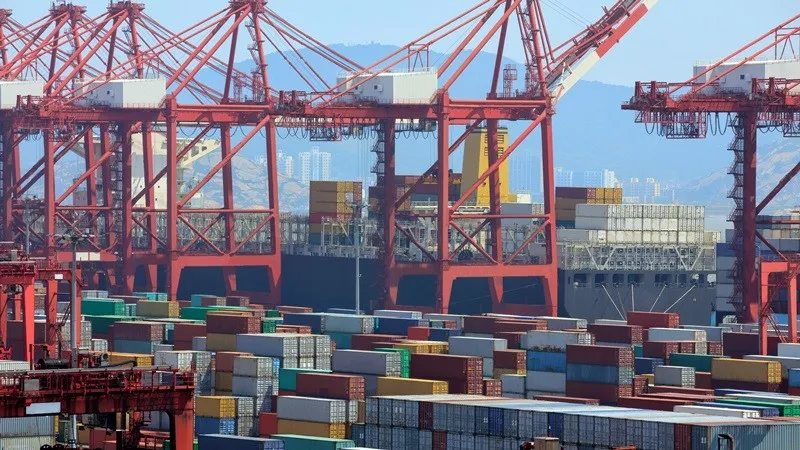
It appears that several key export sectors might fall short of their yearly export goals, with forecasts indicating continued difficulties into the first half of 2024.
Dwindling Orders and Negative Growth
Despite facing a decline in orders since the end of 2022, the textile industry has managed to navigate challenges by exploring new markets. According to the Vietnam Textile and Apparel Association (Vitas), this year has seen Vietnam export textiles and garments to a record 104 countries and territories. However, despite diversifying both markets and products, the industry as a whole is experiencing negative growth due to weak demand from its main market, the United States. Textile and garment exports, as of November 15, have decreased by 12.7%, and the industry is projected to generate around USD 40 billion this year, marking a decline of over 9% compared to 2022.
Some large export enterprises, like Garmex Saigon, have had to reduce staff due to the challenging conditions. For instance, as of September 30, Garmex Saigon had only 37 employees, a significant decrease from the end of 2022 and 2021. Mr. Phạm Xuân Hồng, Chairman of Ho Chi Minh City Textile, Embroidery and Knitting Association, notes that while orders are returning, they are in smaller quantities, with more stringent requirements, shorter timelines, and lower prices.
In the wood and wood products sector, despite some orders returning in the last two months, there has been a more than 18% decrease in exports, as reported by the General Statistics Office as of November 15. The industry is expected to reach only about USD 14.5 billion by the end of the year, approximately USD 2.5 billion lower than planned. Similar to the textile industry, wood orders are resuming with stricter requirements from importers, placing pressure on businesses.
Other industries, such as footwear and seafood, also use the term "warming" to describe the export situation in the last quarter of the year. While orders are returning, there is still uncertainty, and businesses are facing challenges such as more stringent requirements, decreased purchase quantities and prices, and increased demand for environmentally friendly products. Despite improvements in the export situation in recent months, it is projected that the footwear industry will experience a loss of nearly USD 4 billion compared to 2022, with an estimated revenue of around USD 19 billion for the year.
Similarly, the seafood industry is gradually recovering in the last months of the year to meet consumer demand during major holidays. However, it is anticipated that seafood exports will only reach about USD 9 billion by the end of the year, a 17% decrease compared to 2022 and falling short of the USD 10 billion target.
Lingering Challenges in 2024 Despite Year-End Optimism
The challenges persist into 2024, despite some signs of increased orders in the fourth quarter. Most businesses in key export industries anticipate ongoing difficulties, especially in the first and second quarters of 2024. Mr. Vũ Đức Giang, Chairman of Vitas, highlights the substantial challenge faced by the garment industry, aiming for a USD 44 billion target in 2024. While Mr. Giang expects inventories to be released during Christmas and New Year 2024 in major markets like the US and EU, he acknowledges the complexity of stimulating increased demand due to the volatile global economy. Moreover, major textile import markets have imposed new regulations on sustainable development and greening the supply chain, adding to the challenges for businesses in 2024.
Mr. Giang emphasizes the need for the garment industry to continue diversifying markets and products, focusing on sustainable development to meet the growing demand for environmentally friendly practices and reducing greenhouse emissions in 2024. On the other hand, a representative from the wood industry believes that uncertainties may persist until the end of the year, as many fluctuations remain unpredictable. Orders received in the last quarter of 2023 are primarily small, catering to increased year-end shopping demand, without necessarily indicating a substantial resurgence in demand for the following year. The food industry, including seafood, is also expected to face difficulties extending into 2024.
During a recent conference in Ho Chi Minh City focusing on identifying trends and shaping the market in 2024, Mr. Đỗ Hòa, Director of a Management Consulting Company, expressed a cautious outlook. He stated that the prospects for 2024 do not seem significantly brighter than 2023, and true optimism can only arise with a noticeable increase in imports. Mr. Hòa noted that the period from November 1 to 15 marked the first time in 11 semi-monthly data reporting periods of the year that a trade deficit of USD 120 million was recorded. While this signals a somewhat positive development, a clearer picture will only emerge after monitoring trends over the next few months.
In discussions about the challenges of 2024, many opinions tend to focus solely on the recovery of orders. While this is a valid concern, it's important to recognize that the difficulties and challenges of 2024 also stem from the overall health of numerous businesses.




















